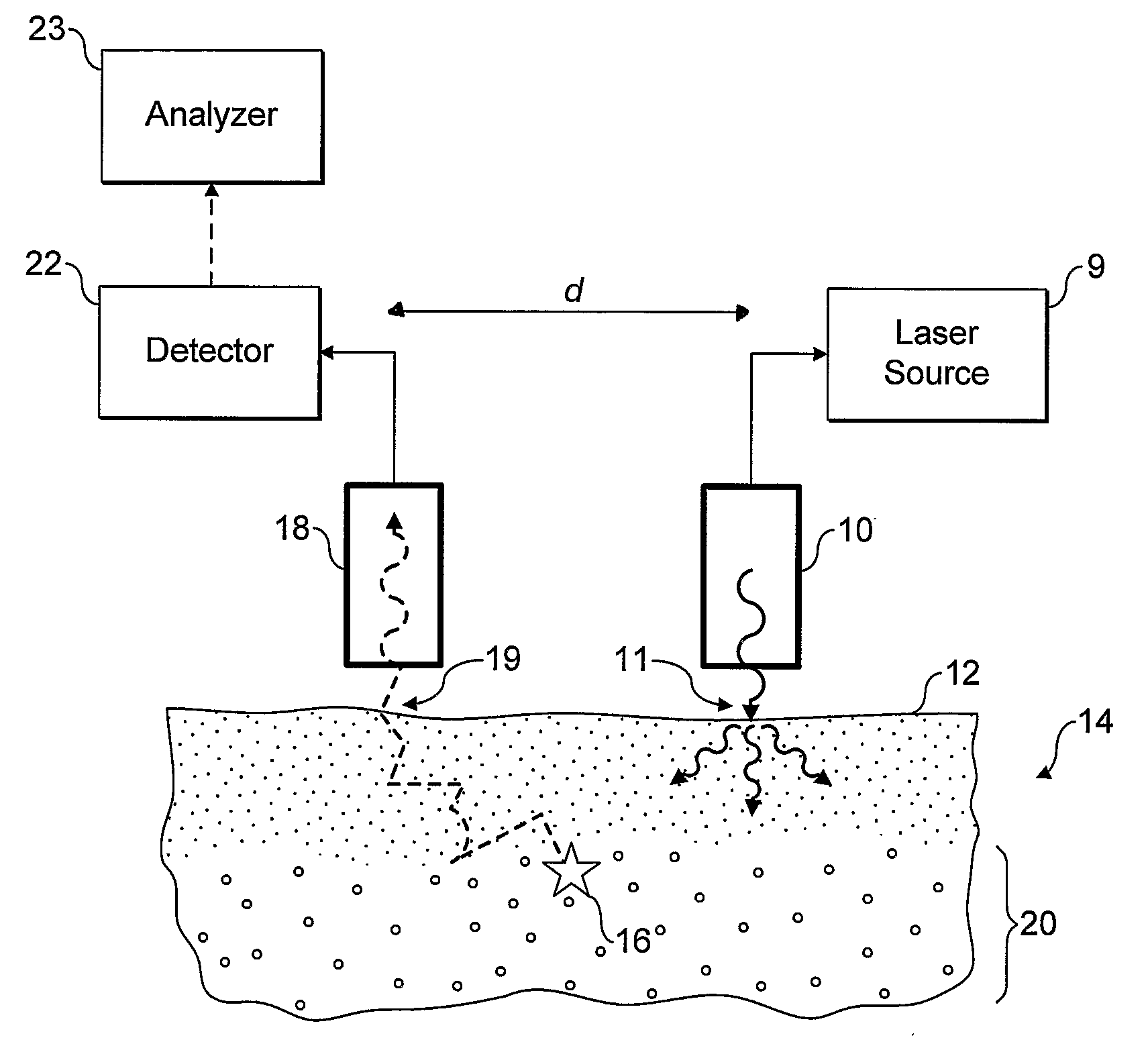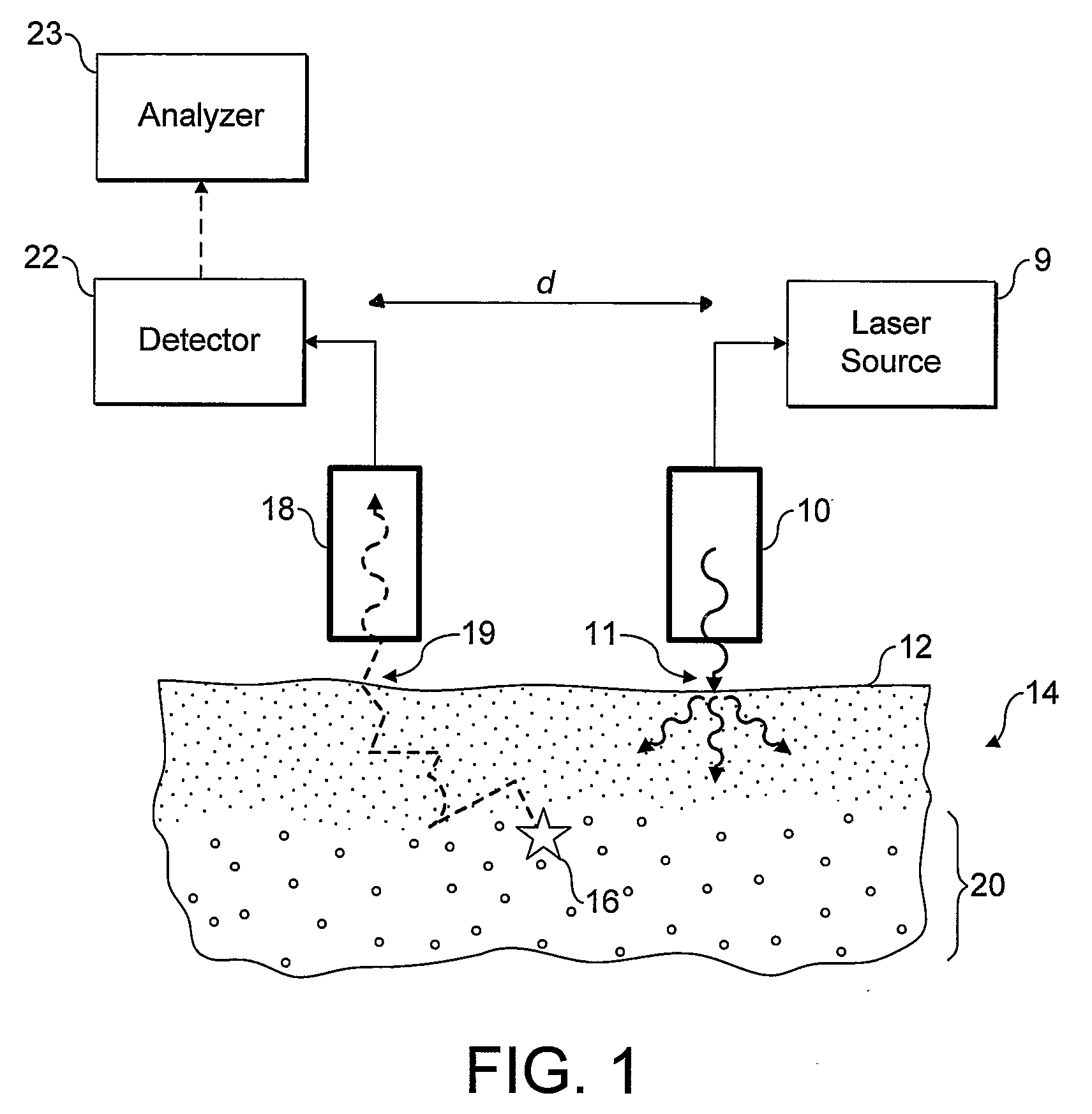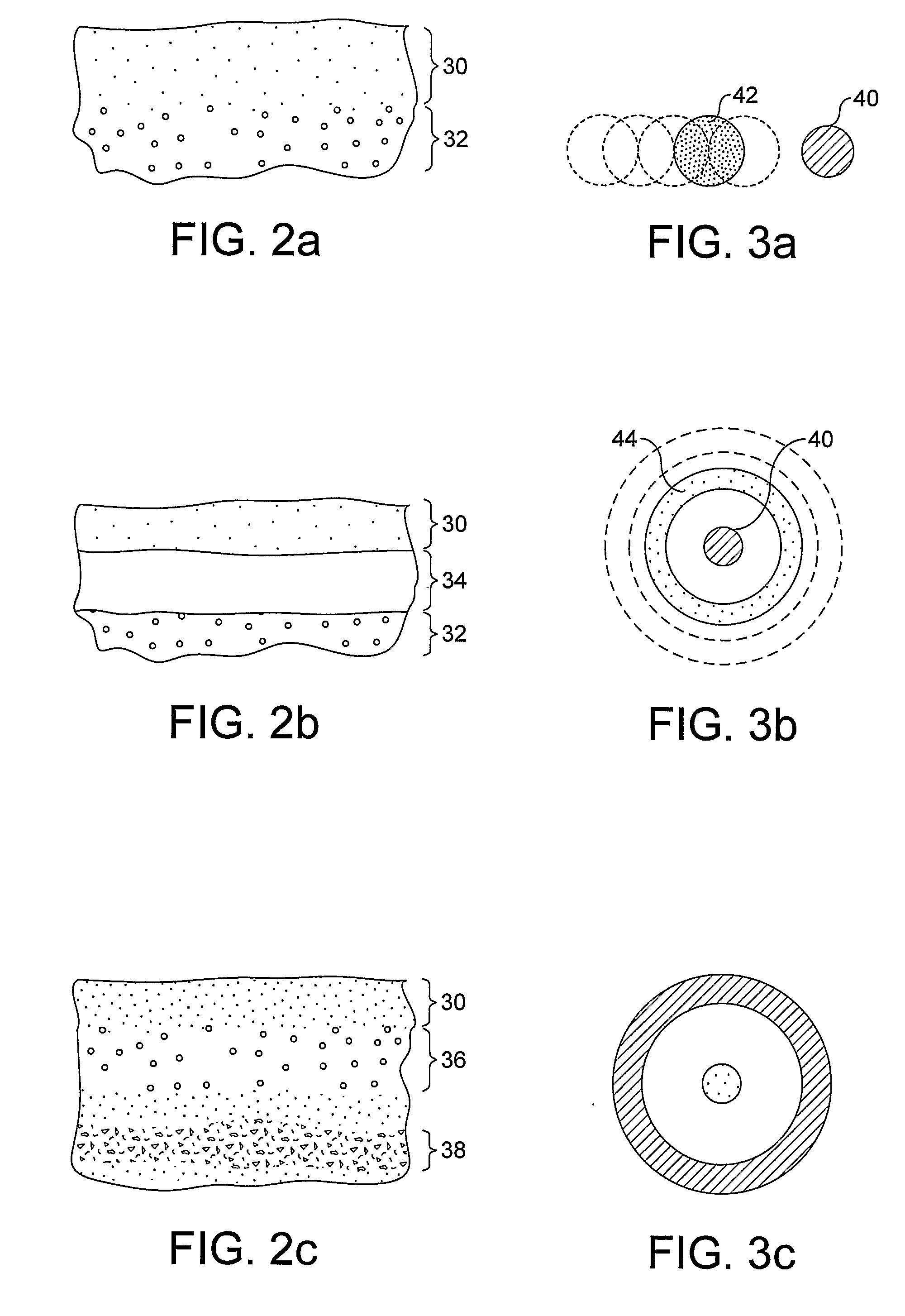Apparatus For Depth-Selective Raman Spectroscopy
a raman spectroscopy and apparatus technology, applied in the field oframan spectroscopy, can solve the problems of weaker signal, limited analysis by these methods, and inapplicability of the elastic scattering technique of das et al. to raman spectroscopy, and achieve the effect of reducing the contribution of the surface layer signal
- Summary
- Abstract
- Description
- Claims
- Application Information
AI Technical Summary
Benefits of technology
Problems solved by technology
Method used
Image
Examples
Embodiment Construction
[0048]Referring now to FIG. 1 an embodiment of the invention is shown in operation, in schematic cross section. A light source 10, incorporating or supplied by laser 9, is used to irradiate a localised entry region 11 of a surface 12 of a sample 14. The incident radiation from the light source is scattered diffusely through the sample. Some of the radiation may be absorbed by the sample, some may give rise to optical emissions for example by fluorescence, and some re-emerges unchanged through the sample surface 12.
[0049]A small proportion of the photons of the incident radiation are inelastically scattered giving rise to Raman photons, for example as illustrated by Raman event 16. The Raman photons in turn are diffusively scattered through the sample. Some may be absorbed, for example giving rise to fluorescence, but some emerge unchanged through the surface 12 to be collected at collector 18. The likelihood of a Raman photon undergoing a second Raman event is very small.
[0050]The c...
PUM
| Property | Measurement | Unit |
|---|---|---|
| wavelength | aaaaa | aaaaa |
| wavelength | aaaaa | aaaaa |
| depths | aaaaa | aaaaa |
Abstract
Description
Claims
Application Information
 Login to View More
Login to View More - R&D
- Intellectual Property
- Life Sciences
- Materials
- Tech Scout
- Unparalleled Data Quality
- Higher Quality Content
- 60% Fewer Hallucinations
Browse by: Latest US Patents, China's latest patents, Technical Efficacy Thesaurus, Application Domain, Technology Topic, Popular Technical Reports.
© 2025 PatSnap. All rights reserved.Legal|Privacy policy|Modern Slavery Act Transparency Statement|Sitemap|About US| Contact US: help@patsnap.com



